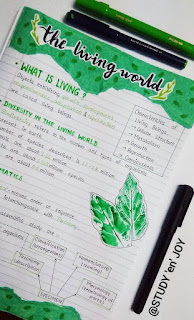Living World 2!
Based on characteristics, all living organisms can be classified into different taxa. This process of classification is taxonomy. A taxonomic group of any rank, such as species, family or class is taxon or taxa.
External and internal structure, along with the structure of cell, development process and ecological information of organisms are essential and form the basis of modern taxonomic studies.
Characterisation→identification→classification→nomenclature
What is systematics?
The branch of biology that deals with classification and nomenclature;taxonomy. Systematics is the study of organism identification, classification, and nomenclature. It is focused on how partnerships between creatures have evolved. Systematics has been used to divide organisms into distinct kingdoms. The study of the different types and diversity of organisms, as well as their interactions, can be referred to as systematics. The idea and practise of identifying, describing, naming, and classifying species are known as taxonomy.
The word systematics is derived from the Latin word 'systema' which means systematic arrangement of organism. Linnaeus used Systema Naturae as the title of his publication. Systematics takes into account evolutionary relationships between organisms.
Classification is not easy and single step process. It involves hierarchy of steps in which every step represents a rank or category. And, as the category is a part of overall taxonomy it is called as taxonomic arrangement. 7 obligate categories are studied. Each category, referred to as a unit of classification, which represents a rank is termed as taxon (pl.: taxa).
_______________________________________
NOTE: Group represents category. Category further denotes rank. Each rank or taxon represents a unit of classification.
Group→Category→Rank→Unit of classification.
______________________________________
Taxonomical studies have led to the development of common categories such as kingdom, phylum or division, class, order, family, genus, species. The basic requirement is the knowledge of characters of an individual or group of organisms.
IMPORTANT POINTS:
- Species is the basic unit of classification.
- Species has the most similar characters in between.
- Genera are aggregates of closely related species.
- The correct sequence in ascending order is - species, genus, family, order, class, phylum or division, kingdom.
- Kingdom: The highest level of categorization, the kingdom, is subdivided into numerous levels of subcategories. The classification of living things is done into five kingdoms: Animalia, Plantae, Fungi, Protista, and Monera.
- Phylum: More detailed than the kingdom, this level of categorisation is the next one. The kingdom Animalia contains 35 phyla. Porifera, Chordata, Arthropoda, etc. are a few examples.
- Class: Prior to the introduction of phyla, class was the taxonomic hierarchy's most broad rank. There are 108 classes in the kingdom animalia, such as the mammalia, reptilia, aves, etc. The current classes, which are infrequently used, differ from the ones Linnaeus recommended.
- Order: Class is a more general rank than order. One or more families that are similar to one another make up the order. Mammalia is divided into about 26 orders, including primates, carnivora, and others.
- Family : Many genera that have some similarities are included in this group in the taxonomic hierarchy. For instance, the Canidae, Felidae, Ursidae, etc., are families of the order Carnivora.
- Genus: A genus is made up of a number of related species. Some genera are monotypic, meaning they have just one species, while others are polytypic, meaning they contain multiple species. Lions and tigers, for instance, belong to the genus Panthera.
- Species: The taxonomic hierarchy's lowest level is this one. On earth, there are around 8.7 million distinct species. It describes a collection of organisms with comparable form, morphology, and reproductive characteristics. Sub-species can be found within a species.
- Please note that the portion which has been deleted by NMC is also given in this blog.




